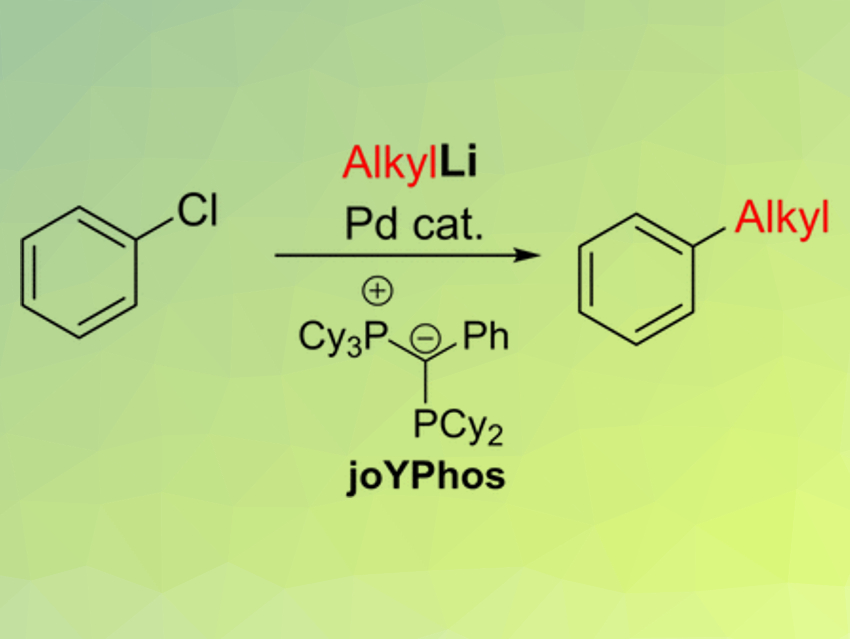Palladium catalysts help to synthesize key chemicals for many industries. However, the direct reaction of two basic reagents, aryl halides and alkyllithium compounds, remains a challenge. Viktoria H. Gessner, Ruhr-Universität Bochum, Germany, and colleagues have found that a catalyst containing YPhos-type ligands can mediate this reaction even at room temperature. This discovery may contribute to the development of more sustainable processes in the chemical industry.
Pd-Catalyzed Coupling Reactions
Palladium-catalyzed chemical processes are very useful. Palladium catalysts help to couple simple carbon-containing compounds to form more complicated chemical structures. However, so far they have failed to couple two common reagents in chemical synthesis, aryl halides and alkyllithium compounds. Among the aryl halides, aryl chlorides are common reagents that react variably during palladium-catalyzed reactions to produce side products.
For coupling reactions with aryl halides and alkyllithium compounds, chemists usually take “detours” by adding intermediate synthesis steps. Unfortunately, every extra synthesis step produces chemical waste and adds costs.
Ylide-Substituted Phosphines
This problem led the researchers to investigate new palladium catalysts. They thought that a functional catalyst would ease many chemical syntheses. “The coupling of aryl chloride and alkyllithium reagents represents one of the most challenging reactions and—if being successful—promises a broad applicability,” the team explains. After testing various existing catalysts, the researchers identified a promising candidate. This catalyst was based on a class of ylide-substituted phosphines called YPhos.
Chemists use YPhos-containing palladium catalysts for difficult coupling reactions. The YPhos ligands combine a negatively charged carbon center and a positively charged phosphonium group (the ylide) with a phosphine-type ligand. Phosphines are typical ligands in palladium catalysis. This ylide–phosphine ligand setup results in special electronic properties. The scientists observed that the ligand helped to activate aryl halides, which is a crucial step in the reaction between aryl halides and alkyllithium compounds.
One of the YPhos class of ligands, a ligand called joYPhos, was shown to have the most favorable architecture. Its combination of electronic properties and a space-filling architecture suppressed the many side reactions otherwise occurring in the coupling.
Potent Precatalysts
The researchers remark that precatalysts containing the YPhos ligands also performed extraordinarily well. Precatalysts have their ligands and a palladium source prearranged in separate compounds. Like two-component adhesives, they assemble in the reaction mixture to form the effective catalyst. This prearrangement makes their handling user-friendly and the compounds are more stable than the free ligands, according to the team.
In a scale-up of the reaction, the scientists synthesized a building block of lesinurad, a drug used for treating gout. They also showed that the catalyst performed well for many variations of the aryl halide and alkyllithium reagents. These results led to the conclusion that this transformation is generally applicable. This new palladium catalyst may, thus, help to avoid costly “detours” in organic syntheses.
- Efficient Pd‐Catalyzed Direct Coupling of Aryl Chlorides with Alkyllithium Reagents,
Viktoria H. Gessner, Thorsten Scherpf, Henning Steinert, Angela Großjohann, Katharina Dilchert, Jens Tappen, Ilja Rodstein,
Angew. Chem. Int. Ed. 2020.
https://doi.org/10.1002/anie.202008866




